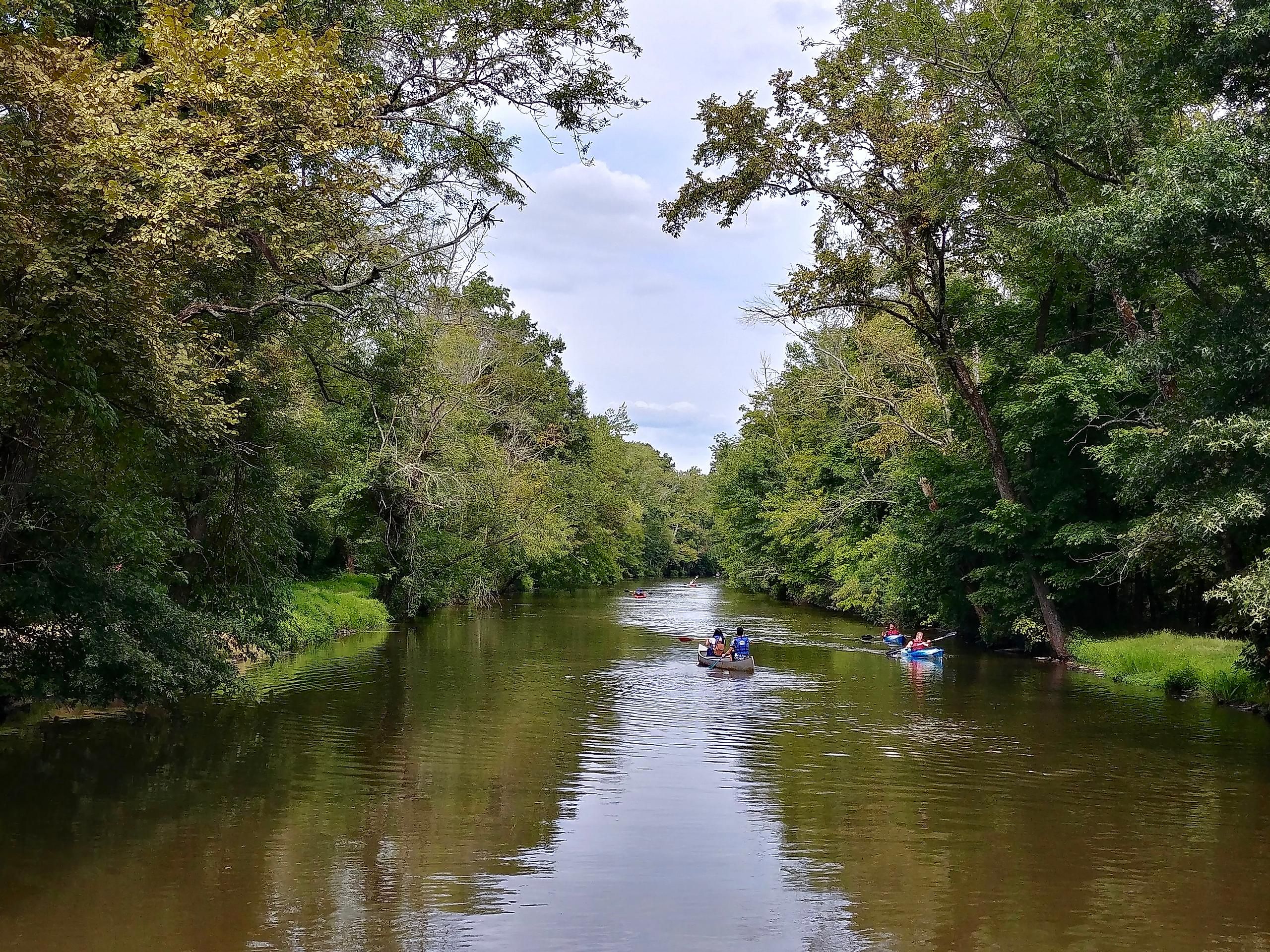
Delaware Canal
Digging a canal is no small feat. It requires meticulous planning, extensive labor, and significant resources to carve a navigable waterway through the landscape. One such monumental achievement is the Delaware Canal, which stretches across the diverse terrain of southeastern Pennsylvania and western New Jersey. This man-made marvel has a multifaceted relationship with its surroundings, intricately entwined with the region's history, climate, wildlife, and economy. The Delaware Canal's very existence is a testament to human ingenuity, as it would not exist without the tireless efforts of those who conceived, constructed, and maintained it over the years.
Geography Of The Delaware Canal
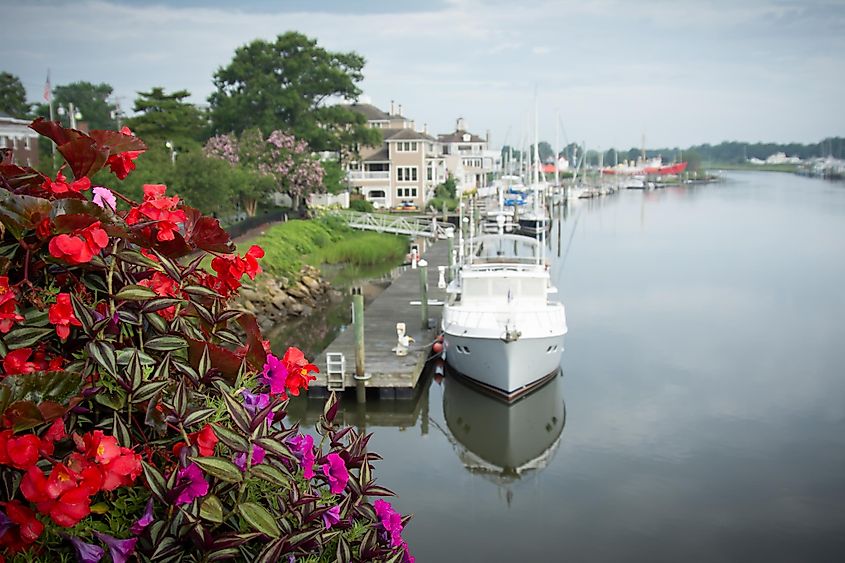
The Delaware Canal, a prominent geographical feature in the eastern United States, stretches across a diverse terrain, connecting various towns, rivers, and geographical regions. This waterway meanders through southeastern Pennsylvania and western New Jersey, covering approximately 60 miles.
Starting in Bristol, a historic town in Bucks County, Pennsylvania, the Delaware Canal follows a northerly path along the Delaware River's western bank. This waterway connects several towns and cities in Pennsylvania, such as Morrisville, Yardley, and New Hope. As it continues, the canal passes through picturesque landscapes, including rolling hills, forests, and farmlands.
Crossing into New Jersey, the canal runs parallel to the Delaware River, passing through a series of small towns, such as Frenchtown and Stockton, before reaching Lambertville. Here, the canal connects with the Raritan Canal, a significant waterway in central New Jersey.
In addition to the towns and cities it traverses, the Delaware Canal encompasses several geographical regions. It lies within the Piedmont Plateau, a region characterized by low-lying hills and fertile soil, as well as the Appalachian Highlands, known for its forests and scenic landscapes. The canal's course also skirts the edge of the Delaware Water Gap, a dramatic gorge carved by the Delaware River between the Appalachian Mountains in Pennsylvania and New Jersey.
Throughout its course, the Delaware Canal also intersects various rivers and tributaries, including the Lehigh River in Easton, Pennsylvania, and the Musconetcong River in New Jersey.
History
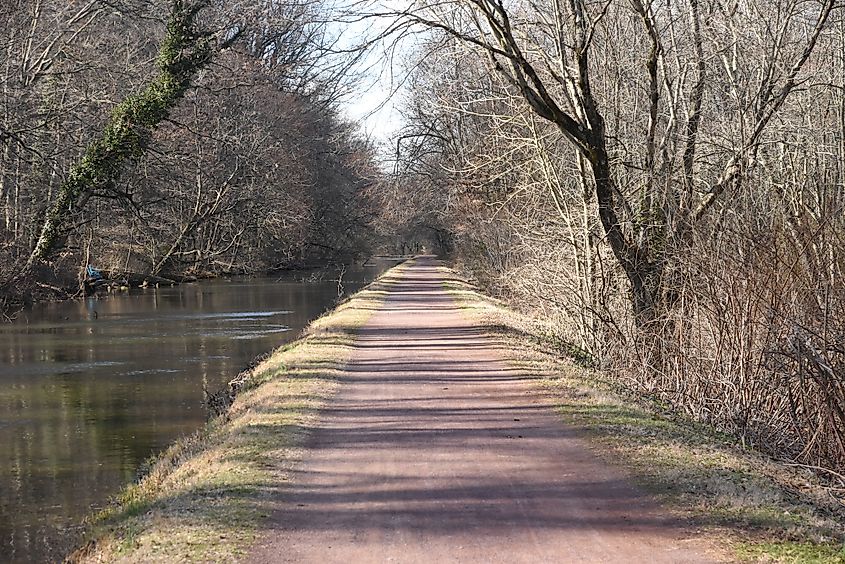
Construction of the Delaware Canal commenced in 1827 under the direction of the Commonwealth of Pennsylvania. The project aimed to create a navigable waterway that would link the coal-producing regions of northeastern Pennsylvania to Philadelphia and New York City, enhancing trade and transportation in the process. Engineers designed the canal to run parallel to the Delaware River, from Bristol in Bucks County, Pennsylvania, to Easton, where it would connect with the Lehigh Canal.
Upon its completion in 1832, the Delaware Canal spanned approximately 60 miles, with aqueducts, stone bridges, and locks in place to manage the water flow and enable the passage of boats. The canal system primarily transported anthracite coal, lumber, and other goods, bolstering the economic growth of the region during the Industrial Revolution.
Throughout the 19th century, the canal experienced several modifications and improvements. The introduction of steam-powered boats in the 1850s allowed for faster, more efficient transportation. Additionally, the canal underwent several expansions to accommodate larger vessels and increased traffic. However, by the turn of the 20th century, the rise of the railroad industry began to overshadow the canal as a primary means of transportation, ultimately leading to its decline.
The Delaware Canal witnessed a brief resurgence during World War I, as wartime demands for coal and raw materials spurred its use. However, this revival was short-lived, and by the 1930s, the canal's commercial operations ceased entirely.
In 1931, the Commonwealth of Pennsylvania acquired the Delaware Canal and designated it as a state park, preserving its historical significance and protecting its natural beauty. Over the years, various preservation efforts and restorations have been carried out to maintain the canal's infrastructure and to convert it into a recreational resource for the public.
Climate
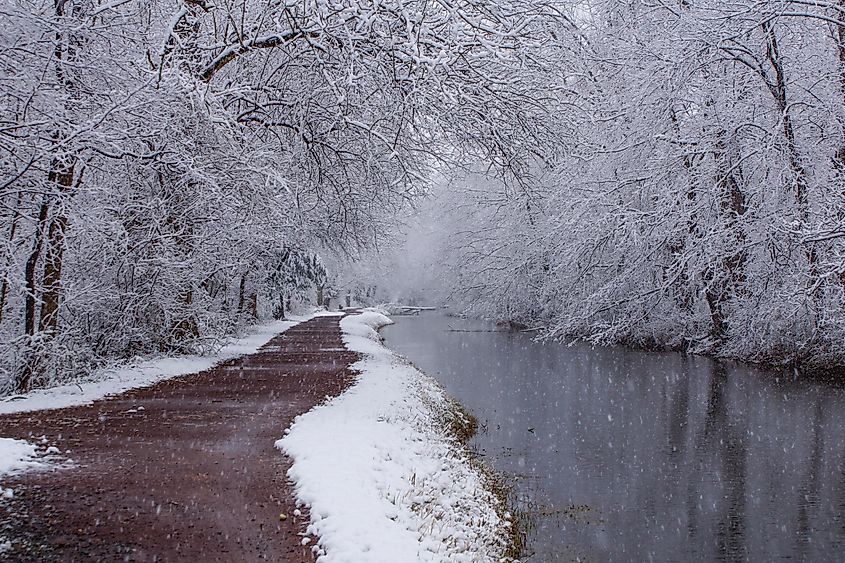
The climate of the Delaware Canal region is characterized by its location in the northeastern United States, within a transition zone between the humid continental and humid subtropical climate classifications. It is best described as a temperate humid climate. The area experiences four distinct seasons, with moderate temperature fluctuations throughout the year. Winters are generally cold, with average temperatures ranging from the upper 20s to low 40s Fahrenheit and occasional snowfall. Spring and fall seasons offer mild and pleasant conditions, with temperatures typically ranging between the upper 40s and 70s Fahrenheit. These seasons also experience moderate precipitation, which contributes to the lush greenery along the canal. Summers tend to be warm and humid, with average temperatures in the mid-80s Fahrenheit and periodic heat waves. The Delaware Canal's climate provides visitors with a variety of experiences, from crisp winter walks to vibrant spring wildflowers and warm summer days, making it an attractive destination year-round.
Fauna And Flora
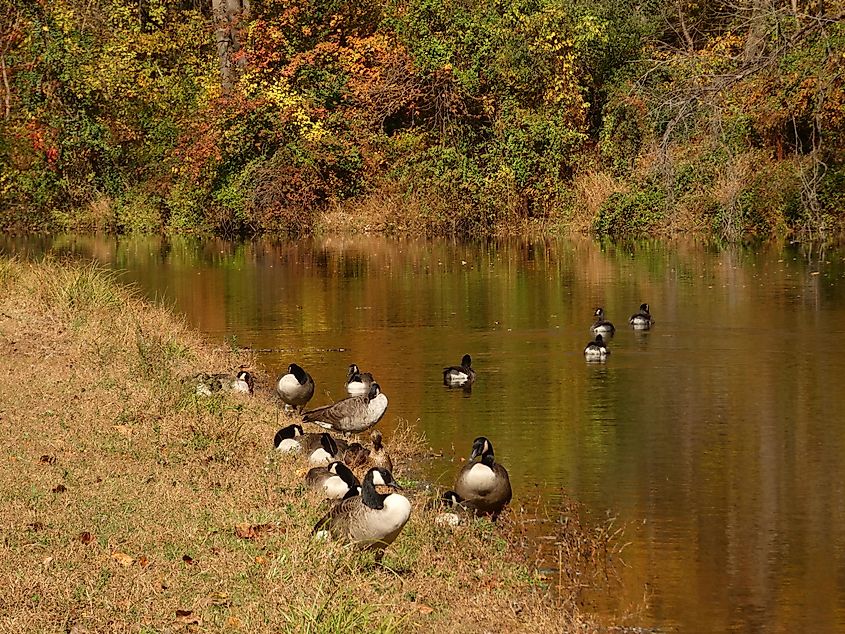
The Delaware Canal is home to a diverse array of flora and fauna, which contributes to its appeal as a recreational and educational resource. The surrounding forests and wetlands host a multitude of tree species, such as oaks, maples, and sycamores, providing habitats for various wildlife species. The dense vegetation along the canal supports an assortment of wildflowers, ferns, and grasses, offering vibrant colors and textures throughout the year. Aquatic plants, including cattails and water lilies, thrive in the canal's slow-moving waters, creating an ideal environment for a variety of fish species, such as bass, sunfish, and catfish. Birdwatchers frequent the area to catch glimpses of numerous bird species, including migratory waterfowl, wading birds, and songbirds. Mammals, such as deer, raccoons, and beavers, also inhabit the region, making the Delaware Canal a haven for nature lovers and wildlife enthusiasts alike.
Economy And Tourism

Along the canal, numerous small towns and cities, such as New Hope, Yardley, and Lambertville, benefit from the influx of tourists, who contribute to the local economy by patronizing restaurants, shops, and accommodations. Additionally, the canal provides ample opportunities for outdoor enthusiasts to engage in activities such as hiking, cycling, and birdwatching on the well-maintained towpath. Water-based activities, including canoeing and kayaking, also draw visitors to the region. Cultural attractions, such as art galleries, museums, and historic sites, further enrich the visitor experience, and annual events, like festivals and fairs, celebrate the canal's unique heritage and local traditions.
It is truly fascinating how an engineering decision made in the early 1800s continues to exert its influence today. The needs of industrial America permanently altered the physical landscape of the East Coast region, and the resulting impacts on the ecosystem persistently affect both the adjacent human populations and wildlife. The Delaware Canal's enduring presence demonstrates the lasting consequences of our actions and the importance of carefully considering the long-term implications of development projects. Perhaps in a time of urgency or innovation, the canal will be used once more. For now, however, it rests.










